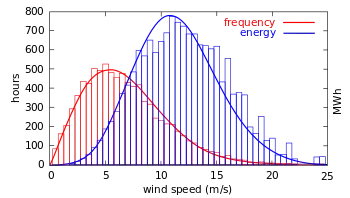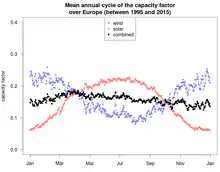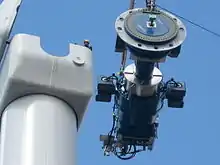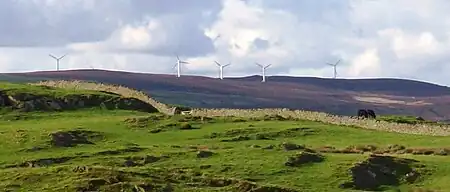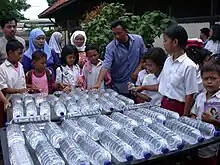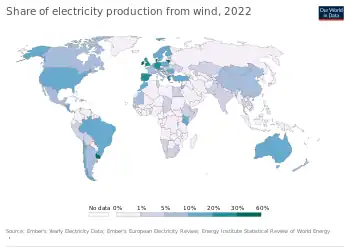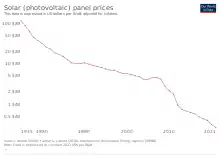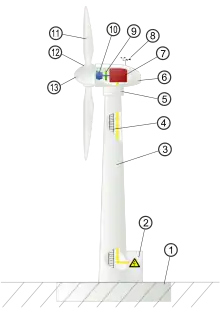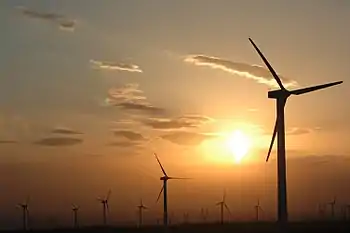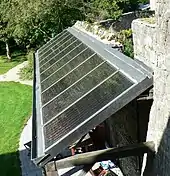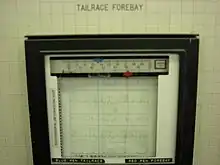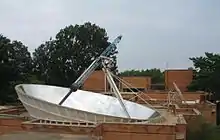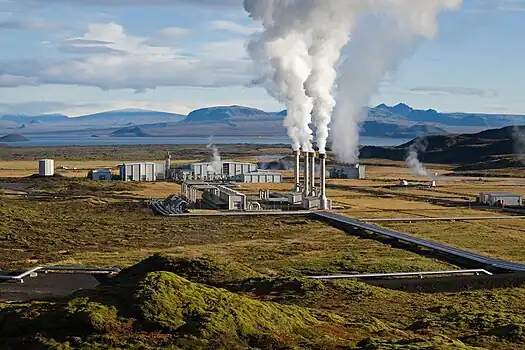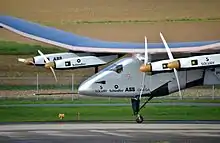Portal:Renewable energy
Introduction Renewable energy sources, especially solar photovoltaic and wind power, are providing an increasing share of power capacity. (Note that capacity is distinguished from actual energy production or consumption.) Renewable energy is energy from renewable resources that are naturally replenished on a human timescale. Renewable resources include sunlight, wind, the movement of water, and geothermal heat. Although most renewable energy sources are sustainable, some are not. For example, some biomass sources are considered unsustainable at current rates of exploitation. Renewable energy is often used for electricity generation, heating and cooling. Renewable energy projects are typically large-scale, but they are also suited to rural and remote areas and developing countries, where energy is often crucial in human development. Renewable energy is often deployed together with further electrification, which has several benefits: electricity can move heat or objects efficiently, and is clean at the point of consumption. From 2011 to 2021, renewable energy grew from 20% to 28% of global electricity supply. Use of fossil energy shrank from 68% to 62%, and nuclear from 12% to 10%. The share of hydropower decreased from 16% to 15% while power from sun and wind increased from 2% to 10%. Biomass and geothermal energy grew from 2% to 3%. There are 3,146 gigawatts installed in 135 countries, while 156 countries have laws regulating the renewable energy sector. In 2021, China accounted for almost half of the global increase in renewable electricity. Globally there are over 10 million jobs associated with the renewable energy industries, with solar photovoltaics being the largest renewable employer. Renewable energy systems are rapidly becoming more efficient and cheaper and their share of total energy consumption is increasing, with a large majority of worldwide newly installed electricity capacity being renewable. In most countries, photovoltaic solar or onshore wind are the cheapest new-build electricity. Many nations around the world already have renewable energy contributing more than 20% of their total energy supply, with some generating over half their electricity from renewables. A few countries generate all their electricity using renewable energy. National renewable energy markets are projected to continue to grow strongly in the 2020s and beyond. According to the IEA, to achieve net zero emissions by 2050, 90% of global electricity generation will need to be produced from renewable sources. Some studies have shown that a global transition to 100% renewable energy across all sectors – power, heat, transport and industry – is feasible and economically viable. Renewable energy resources exist over wide geographical areas, in contrast to fossil fuels, which are concentrated in a limited number of countries. Deployment of renewable energy and energy efficiency technologies is resulting in significant energy security, climate change mitigation, and economic benefits. However renewables are being hindered by hundreds of billions of dollars of fossil fuel subsidies. In international public opinion surveys there is strong support for renewables such as solar power and wind power. In 2022 the International Energy Agency asked countries to solve policy, regulatory, permitting and financing obstacles to adding more renewables, to have a better chance of reaching net zero carbon emissions by 2050. (Full article...) Selected article - Hydroelectricity, or hydroelectric power, is electricity generated from hydropower (water power). Hydropower supplies one sixth of the world's electricity, almost 4500 TWh in 2020, which is more than all other renewable sources combined and also more than nuclear power. Hydropower can provide large amounts of low-carbon electricity on demand, making it a key element for creating secure and clean electricity supply systems. A hydroelectric power station that has a dam and reservoir is a flexible source, since the amount of electricity produced can be increased or decreased in seconds or minutes in response to varying electricity demand. Once a hydroelectric complex is constructed, it produces no direct waste, and almost always emits considerably less greenhouse gas than fossil fuel-powered energy plants. However, when constructed in lowland rainforest areas, where part of the forest is inundated, substantial amounts of greenhouse gases may be emitted. Construction of a hydroelectric complex can have significant environmental impact, principally in loss of arable land and population displacement. They also disrupt the natural ecology of the river involved, affecting habitats and ecosystems, and siltation and erosion patterns. While dams can ameliorate the risks of flooding, dam failure can be catastrophic. In 2021, global installed hydropower electrical capacity reached almost 1400 GW, the highest among all renewable energy technologies. Hydroelectricity plays a leading role in countries like Brazil, Norway and China. but there are geographical limits and environmental issues. Tidal power can be used in coastal regions. (Full article...)Quotations -
Main topicsRenewable energy sourcesGeneralRenewable energy commercialization · Smart grid · Timeline of sustainable energy research 2020–present Renewable energy by countryList of countries by electricity production from renewable sources
WikiProjectsWikiProjects connected with renewable energy:
Selected image -Selected biography - Rolf Disch is a German architect, solar energy pioneer and environmental activist. Born in Freiburg im Breisgau, Germany, Disch has dedicated particular focus to regional renewable and sustainable energy. As head of his own architecture firm, Rolf Disch Solar Architecture, Disch is committed to advancing Germany's incorporation of solar energy generation into residential, retail, and commercial building and design. In 1994, Rolf Disch built the Heliotrope in Freiburg which was the world’s first home to create more energy than it uses, as it physically rotates with the sun to maximize its solar intake. Disch then developed the concept PlusEnergy, simply making it a permanent goal for his buildings to produce more energy than they consume in order to sell the surplus solar energy back into the grid for profit. (Full article...)Did you know? -... that the International Renewable Energy Agency (IRENA) to promote widespread and increased adoption and sustainable use of all forms or renewable energy was founded in 2009 ? Acting as the global voice for renewable energies, IRENA will facilitate access to all relevant renewable energy information. IRENA's founding reflects a growing consensus among governments around the world on the need to speed up the commercialization of renewable energy worldwide. IRENA provides advice and support to governments on renewable energy policy, capacity building, and technology transfer. IRENA will also co-ordinate with existing renewable energy organizations, such as REN21. General images -The following are images from various renewable energy-related articles on Wikipedia.
Related portalsCategoriesCategory puzzle Select [►] to view subcategories
Renewable energy Renewable energy by continent Renewable energy by country Lists related to renewable energy Algaculture Anaerobic digestion Bioenergy Renewable energy certification Documentary films about alternative energy Geothermal energy Renewable energy organizations People associated with renewable energy Renewable energy policy Renewable electricity Renewable energy economy Solar energy Renewable energy technology Water power Wind power Renewable energy stubs Associated WikimediaThe following Wikimedia Foundation sister projects provide more on this subject:
Discover Wikipedia using portals
|




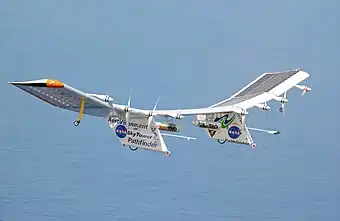

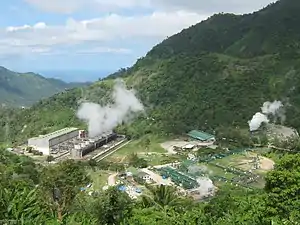



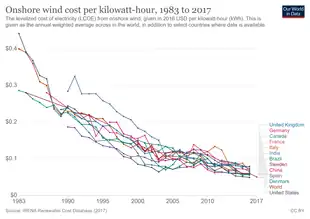

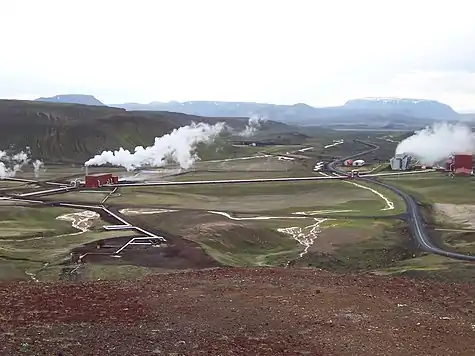



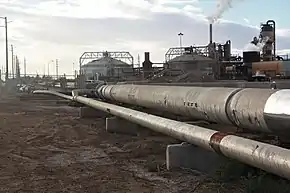

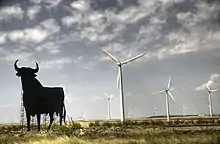


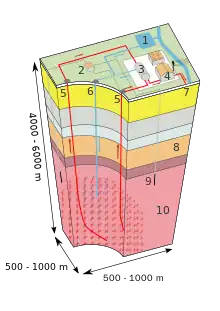
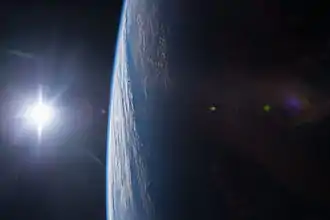
![Image 21Concentrated solar panels are getting a power boost. Pacific Northwest National Laboratory (PNNL) will be testing a new concentrated solar power system – one that can help natural gas power plants reduce their fuel usage by up to 20 percent.[needs update] (from Solar energy)](../I/Photo_of_the_Week-_Boosting_Solar_Technology_(8722948189).jpg.webp)
